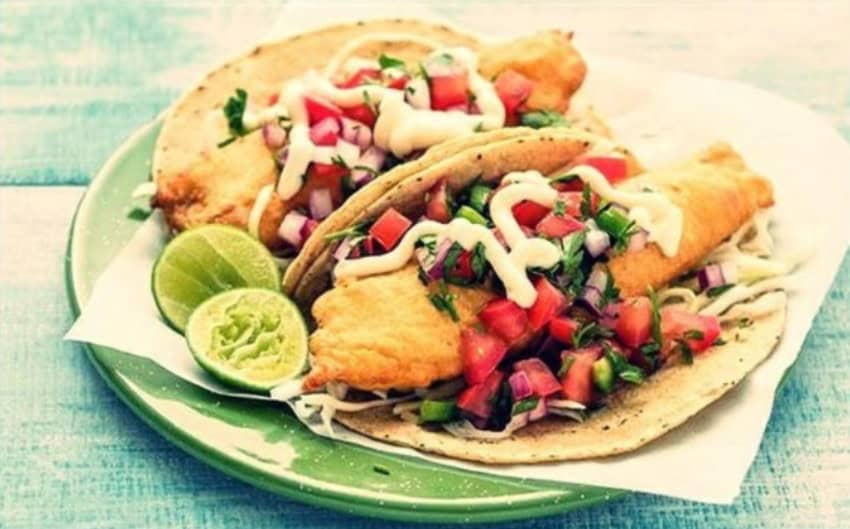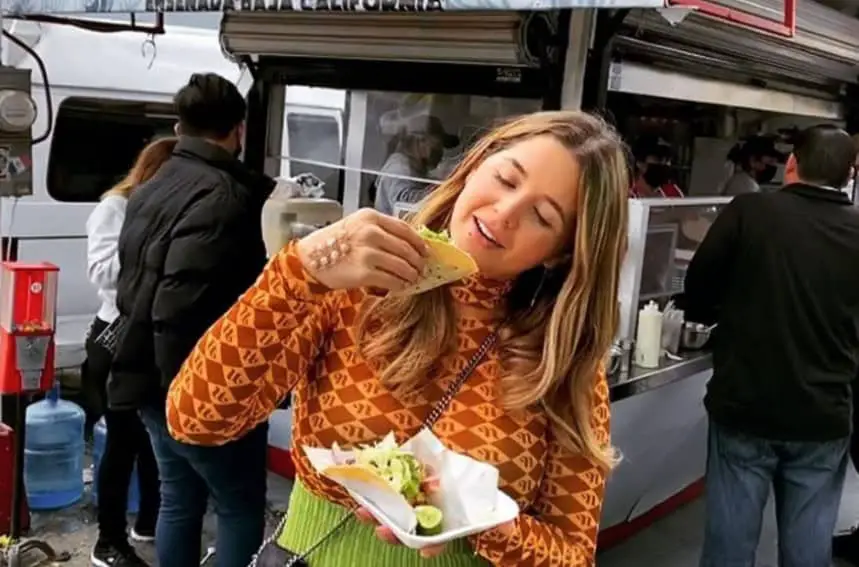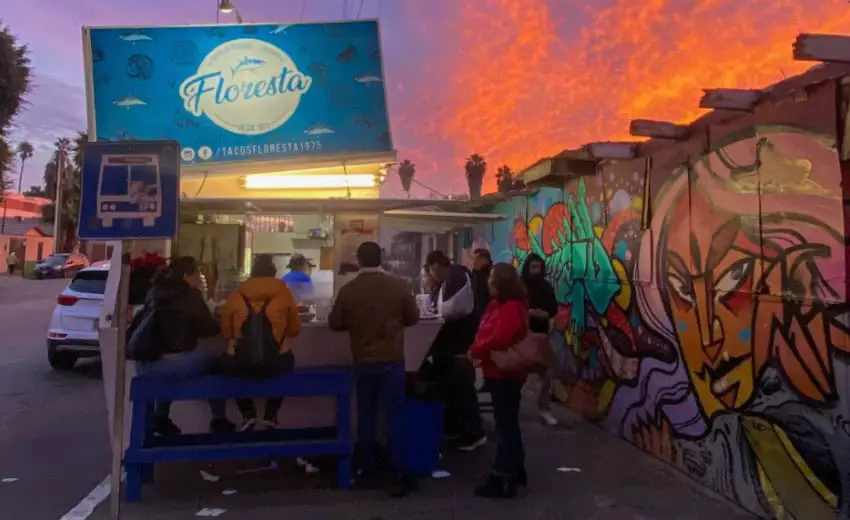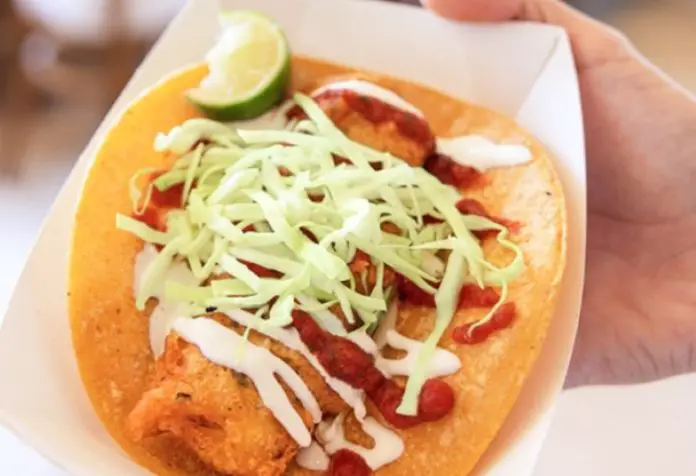In 1974, a San Diego State student named Raph Rubio took a seasonal break from his studies in psychology and Spanish to accompany friends on a Spring Break trip across the border to San Felipe. The highlight of the trip — at least for Rubio — was the abundance of stands serving delicious fish tacos. Rubio even managed to score a recipe, and by 1983 he was selling a personalized version of the fish taco (dubbed the “original fish taco”) at his first namesake restaurant in San Diego. More restaurants would follow as the Rubio’s Coastal Grill restaurant chain rapidly grew, ultimately topping out at about 200 locations and helping to popularize the fish taco as a staple of SoCal culture and cuisine before recent economic issues necessitated numerous closures.
But, of course, Rubio didn’t invent the fish taco, any more than the owners of the stands in San Felipe did. When he later returned to San Felipe to offer money to the taquero named Carlos who had generously shared his recipe, Rubio discovered he had decamped to Ensenada. This was somewhat fitting, as Ensenada is considered the true birthplace of the modern Baja-style fish taco, and it was likely one of the early pioneers from that city who had brought the invention to San Felipe, kicking off the proliferation of stands that had so charmed Rubio during his Spring Break visit there half a century ago.
How the Baja-style fish taco was born

Corn tortillas have been around for thousands of years and fishing dates back even further. So there’s little doubt that fish tacos have been consumed since ancient times. But the Baja-style version – beer-battered, deep-fried fish served in corn tortillas with signature toppings plus a squeeze of lime juice – originated in Ensenada in the late 1950s or early 1960s.
The dates are uncertain, but locals remember a Sinaloan known as Mario “El Bachigualato” as the first modern vendor of fish tacos. He began selling his tortilla-wrapped specialties sometime around 1960 at the Mercado Negro. No, not the seafood market as it exists today, but a loose collection of about 20 stands centered nearby, where Agencia Arjona now sits, that specialized in the black market sale of freshly caught fish – and street food. This makeshift market was finally shut down by authorities after a decade of use in 1967. But not before it produced two iconic regional culinary creations: the fish taco and a seafood stew called “caldo de siete mares”.
According to the Ensenada-based newspaper El Vigía, Mario’s tacos at Mercado Negro were originally meat-based. However, it was a seafood market, so it was only a matter of time before he gave in to requests and started grilling up fish tacos made from cheap and plentiful “angelito,” or angelshark (Squatina californica). Yes, grilling. The earliest versions weren’t breaded or deep fried, and the only topping was a salsa bandera, a type of pico de gallo that takes its name from the fact that its ingredients (green serrano chiles, onion, and tomato) mimic the colors of Mexico’s flag.
The evolution of a classic comfort food
The success of Mario’s fish tacos soon brought competition from rival stand owners like Tamaulipas native Zeferino Mancilla Fortuna and Pedro Alvarado, each of whom put their stamp on the evolving Baja-style fish taco. The former, for example, is credited as being the first to apply a batter to his fish, while the latter was a pioneer in frying technique. Alvarado’s stand had opened by 1961, making him the second of the fish taco trailblazers at the market. By 1963, Mancilla had set up shop, too. Other taqueros, like Tomás Jiménez, and Aurora Rojas Aguilar, followed.

These early fish taco makers at Mercado Negro were scattered when the market was closed in 1967. “El Bachigualato,” reputedly a hard drinker, had already turned his stand over to a woman named Socorro Negrete Rivera in 1963. She later gave Rojas her start before, like the others, she was evicted. That’s when she decided to take her fish tacos to San Felipe. So she’s the probable starter of the trend of fish taco stands there and hers may have been among those visited by a young Ralph Rubio and friends in 1974.
Although no definitive link has been established to Japanese tempura, the similarities in deep frying cooking methods that ultimately evolved for the fish tacos suggest some connection. Ensenada, notably, welcomed many Japanese immigrants in the early decades of the 20th century, with fishing a popular industry for recent arrivals. So whether taqueros were asked to make their delicacies a certain way for Japanese customers or were inspired after visiting Japanese homes or fish camps, it’s almost certainly true that the Baja-style fish taco is a fusion food.
The Essential Ingredients of a Baja Fish Taco
Over time, all the signature elements of the Baja-style fish taco were developed at Mercado Negro. These include a beer-battered and deep-fried whitefish. Boneless angel shark remains popular in Ensenada – as do versions made with shrimp – but other species are acceptable. Rubio’s, for example, has always favored pollock.
The corn tortilla is not negotiable. Nor is the squeeze of lime – at least for traditional preparations. However, lettuce can be used rather than shredded cabbage to accompany the pico de gallo and a “crema” sauce featuring sour cream.
Where to Find the Perfect Baja Fish Taco

Aficionados of Baja-style fish tacos will find no shortage of great options. Delicious versions can now be had throughout the Baja California peninsula, from Tijuana to Cabo San Lucas. But for those who want to visit the dish’s ancestral home, the oldest extant fish taco purveyor in Ensenada is thought to be Tacos Fénix, which first opened in 1970. It’s still a mecca, nearly as popular with tourists as it is with locals. Tacos Floresta, only a block from Tacos Fénix’s location on Espinoza, also has a long history and many passionate advocates, including the popular food magazine Bon Appétit.
Can’t wait for your next trip to Baja California? California is close enough. Rubio’s Coastal Grill, after all, has been serving fish tacos there for more than 40 years, nearly as long as the taqueros who inspired its founder across the border.
Chris Sands is the Cabo San Lucas local expert for the USA Today travel website 10 Best, writer of Fodor’s Los Cabos travel guidebook, and a contributor to numerous websites and publications, including Tasting Table, Marriott Bonvoy Traveler, Forbes Travel Guide, Porthole Cruise, Cabo Living and Mexico News Daily. His specialty is travel-related content and lifestyle features focused on food, wine and golf.
